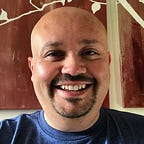Beyond hydration: Using water’s hidden secret to feel amazing
4 min readAug 15, 2023
We take water for granted, but I’ve been learning about water’s mysterious and miraculous nature.
You probably learned the basics of water in your first science class in elementary school. Combine two hydrogen atoms with one oxygen atom, and you have H20, the chemical formula for water. That’s the first big miracle right there. Hydrogen and oxygen are both…
